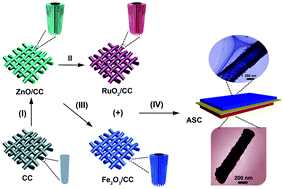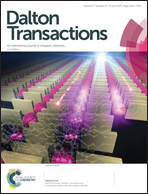Fabrication of hollow nanorod electrodes based on RuO2//Fe2O3 for an asymmetric supercapacitor†
Abstract
In this work, hollow RuO2 nanotube arrays were successfully grown on carbon cloth by using a facile two-step method to fabricate a binder-free electrode. The well-aligned electrode displays excellent electrochemical performance. By using RuO2 hollow nanotube arrays as the positive electrode and Fe2O3 as the negative electrode, a flexible solid-state asymmetric supercapacitor (ASC) has been fabricated which exhibited excellent electrochemical performance, such as a high capacitance of 4.9 F cm−3, a high energy density of 1.5 mW h cm−3 and a high power density of 9.1 mW cm−3. In addition, the two-electrode SC shows high cycling stability with 97% capacitance retention after 5000 charge–discharge cycles. These excellent electrochemical performances are ascribed to the unique hollow structural design of electrodes, which can shorten the ion diffusion length, provide a fast ion transport channel, and offer a large electrode/electrolyte interface for the charge-transfer reaction. The structural design and the synthesis approach are general and can be extended to synthesizing a broad range of materials systems.



 Please wait while we load your content...
Please wait while we load your content...